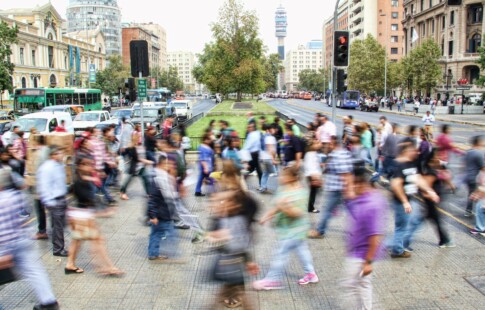
Like or Dislike? Social Media and Sustainability’s Influential Relationship
We are reader-supported. When you buy through links on our site, we may earn affiliate commission.
Social media and sustainability have a rocky relationship. Some days, it is the most powerful force in the eco-revolution. On others, it gives activists nightmares. It is a challenge to conceptualize how digital spaces have that much of an influence on the climate crisis, but the ballooning growth of the social internet is something environmentalists can no longer ignore. From advocacy to pollution, the connection between these concepts is more than you may realize.

The Likes — How Synergy Yields Decarbonization
Despite the bad reputation social media gets, it can actually do a world of good for eco-friendly initiatives and community. What does that look like, if companies and users engage with these platforms properly?
Awareness and Education
Social media spreads information faster than any technological phenomenon. With the push of a button, sustainability issues, news, concepts, and efforts spread all over the internet. Algorithms pick up on how interested people are, and share the joy and knowledge with the world.
The expanded surface area is something activists have never had before. Now, people can be more educated and passionate about topics like pollution, conservation, animal welfare, deforestation, and renewable energy. This is just scratching the surface.
Community-Building
Many people don’t engage with sustainability issues because they feel alone. This is no longer an excuse because social media has countless microcommunities, near and far, to help people feel connected and passionate about eco-conscious concerns. Sharing ideas and inspiring others to stay motivated for their cause has never been more streamlined and accessible.
Advocacy and Mobilization
Need to organize a rally or advertise a nonprofit fundraiser? What about publicizing important issues being voted on in the next election? Social media is the perfect place to hit people in their emotional centers, pushing people to mobilize against harmful legislation, activity, and initiatives.
Additionally, posting photos and videos about your advocacy shows others fighting for the planet can fit into any lifestyle. It can look tons of different ways, and social media normalizes countless variations of advocacy.
Promotion of Sustainable Practices
People may not practice eco-friendly lifestyles or behaviors because of pure ignorance. Maybe they have never heard of fast fashion before or knew of the ability to call energy providers to change their generators to renewable power. Sharing these actions, large and small, on the grand stage of social media means more people might pick up the habits. It also shows companies that consumers care, and it will influence their behaviors.

The Dislikes — How Metaphorical and Literal Toxicity Unfolds
There is always a dark side, and social media and sustainability can have troubled interactivity. Discover what corporations and users are doing to spark ideas on how to clean up digital and physical environments.
Misinformation and Greenwashing
Companies and individuals alike can promote unethical, ill-informed information about the climate crisis and what it means to be an environmental steward. Corporations lie all the time about how sustainable they are being, but if the info is dressed in an eye-catching, viral ad, then many are none the wiser.
Alternatively, others may actively oppose or ignorantly promote falsities about environmental circumstances. It misleads consumers, undermines the efforts of activists, and jeopardizes people’s understanding of the climate crisis.
Consumerism and Overconsumption
Influencers post Amazon hauls daily, purchasing useless cosmetics, novelty items, kitchen gadgets, and clothes that they know what to do with. But, buying and throwing away products became their job.
“Hauling” and “affiliate link” culture have gone too far, making more people concerned on where they can buy an influencer’s lipstick than what they’re saying. This overconsumption is unsustainable and not practical for the majority of people, and tons of internet personalities promote this lifestyle as aspirational.
Digital Footprint and Energy Use
Research has shown how many carbon emissions each social media app produces. To nobody’s surprise, TikTok is the worst offender, producing 2.63g of emissions every minute. Compare this to YouTube’s 0.46g, which considers metrics like user base, length of time on the app, and the type of content needing to be loaded. Data centers, fossil fuels, and e-waste make the footprints of social media extremely high, and this doesn’t even include the bad habits its users engage with.
Polarization
Echo chambers are easy to fall into on social media — for better and for worse. Isolating your perspectives to one side leads to polarizing conversations and environmental discourse that becomes ineffective at enacting change.
Activists can find themselves surrounded only by people who share similar beliefs, never reaching new minds. Meanwhile, the uninformed rise up and continue to dilute science-based evidence. Neither situation is ideal, but falling into this trap is easy on social media.

The Comments Section — How to Improve
It’s time to take this knowledge and apply it. What actions can everyone start practicing today to make social media a greener place to hang out?
Promote the Right Techniques
Companies and users need to promote eco-friendly practices. Users need to forgo haul-style videos and advocate for socially irresponsible companies, like Amazon and Temu. Businesses need to reduce their footprints by using renewable energy in their data centers, using green software, and encouraging algorithms to promote the facts about the climate. Everyone must support sustainable content and discourage the rest.
Encourage Transparency and Accountability
Everyone must fight for legislation to hold companies accountable for the social and environmental impact they make. Though users have a lot to learn about their relationship with social media and sustainability, corporations are the worst offenders in promoting negative behaviors.
Policy is the best way to standardize responsible construction of social media environments, deterring overconsumption, reporting misinformation, and overseeing excessive resource use.
Be Mindful of Energy Use
Spending hours on your phone on social media uses energy, likely coming from fossil fuels. Plus, it degrades a phone, which ends up as e-waste. Corporations leverage some of the most wasteful facilities in the world — data centers — to support social media. Energy-efficient heating and cooling, while implementing clean power, is critical for reducing the sector’s ever-climbing global carbon emissions contributions.
Practice Digital Minimalism
Digital minimalism is when people limit screen time. This could be a huge way to take individual responsibility by limiting exposure to echo chambers or advertisements. Instead, spend more time off-screen working on hitting your green goals — what this looks like is up to you.
Social Media and Sustainability in the Future
It is possible for social media companies and its users to interact with these platforms while considering the planet’s well-being. Everyone must consider two things. First, people must evaluate how they use social media, changing habits to a more eco-conscious version.
Second, users must encourage corporate initiatives to change how many resources social platforms consume. Organizations should spearhead green reform from within, but regulatory action and consumer engagement will keep the momentum alive.
Share on
Like what you read? Join other Environment.co readers!
Get the latest updates on our planet by subscribing to the Environment.co newsletter!
About the author
Grace Waters
Always inspired by the natural world around her, Grace grew up exploring tide pools and hiking mountain trails, developing a deep appreciation for biodiversity and conservation. Now, Grace works as the Senior Editor of Environment.co where she covers topics related to emerging clean technologies, zero-waste initiatives, and the intersection of environmental policy and everyday living.





